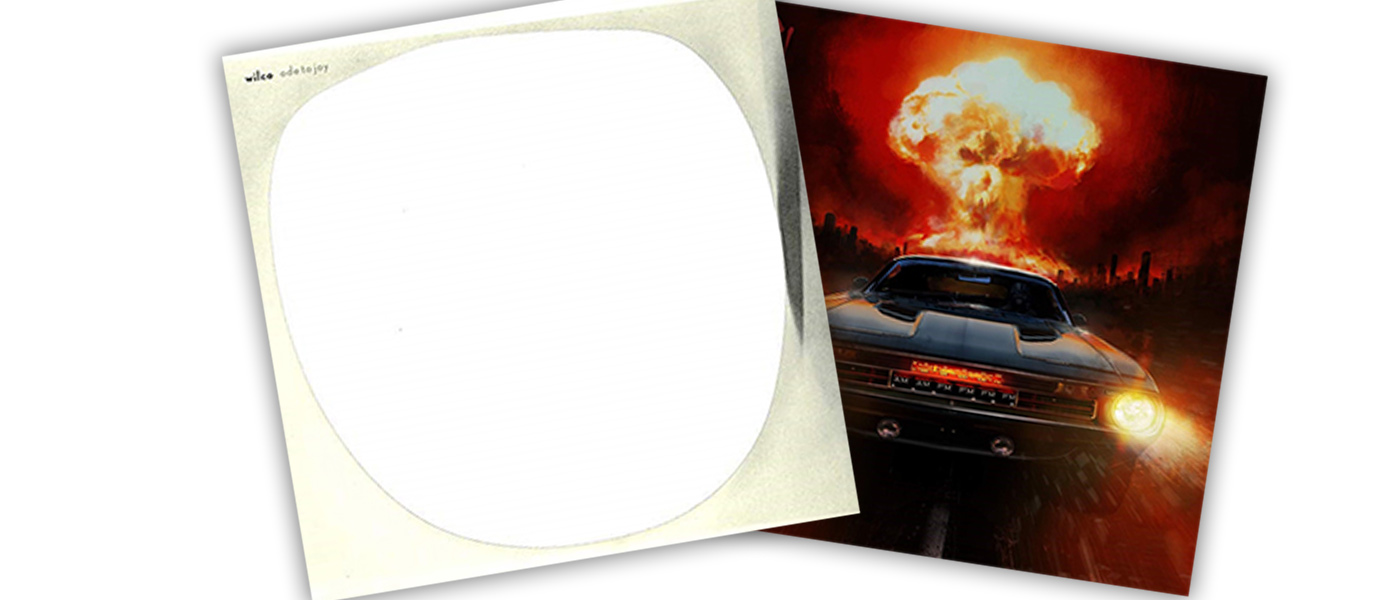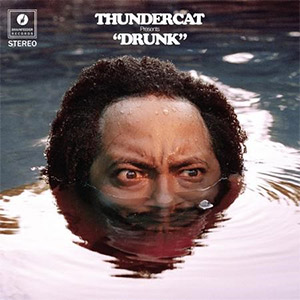
Things have been a little slow for me with regards to what’s going on in the Rock ’n Roll world recently. I mean, I’m not that big on most new music anyway, but I’ve had a hell of a time even finding new releases that I’d care to explore. So I decided to go a little deeper into the Jazz world. Music Matters’s Blue Note reissues are always tops on my list of audiophile releases. But those titles are finite. And, as far as I know, those folks aren’t planning much beyond the stellar series of twelve titles that we’ll be working our way through here over the next couple of months. It never crossed my mind that I might stagger into a whole new scene of young Jazzers working today. But it seems like there’s a collective of players down in L.A. that pay their bills working Hip-Hop studio sessions while getting together to push Jazzy boundaries in the clubs at night. That’s my romanticized take on things, and it’s based strictly on observations from afar. There are three players within that scene that have made their way onto my radar, and they are Kamasi Washington, Terrace Martin, and Thundercat. We’re here to check out the latter’s Drunk album from 2017.
I saw Thundercat open for Beck in Berkeley a few months after Drunk was released. I enjoyed his set and liked his sit-in during the headliner’s encore even more. They played Thundercat’s latter-day adult contemporary hit (“Show You the Way”) with Beck’s band, which included vocalists standing in for Michael McDonald and Kenny Loggins (who both sang on the Drunk version). It was a Yacht Rock event worth traveling for. I half expected the boys from Ambrosia to step out from the wings at any second for a rousing sing-a-long to “You’re the Biggest Part of Me.”. Anyway, Drunk is a blast. I’ve noticed that these young Jazz cats are prominent on the vocoder effect, but I can’t tell if Thundercat’s using one throughout Drunk or not. It seems like there’s some sort of electronic effect on his vocals, but he might have just doubled up his vocal tracks. Regardless, it’s a smoothed out, high falsetto sort of attack that is prevalent throughout the album. It works for me, but it’s really just a droplet in a sea of electronic wizardry that makes Drunk such a sonic event. There’s not much air in the room when it comes to these tracks. The sounds are really direct like the instruments were plugged straight into the soundboard. Lots of bleeps and boings and plinks and clicks. The musical equivalent of a Tron movie, perhaps.
It’s worth noting that this album is not really what most people think of when they hear the word “Jazz.” I don’t know what Drunk is, which is part of the fun. There are elements of Hip-Hop, Rock, Soul, Funk, Jazz, and… Yacht Rock throughout. The set feels bigger than it is, mostly because of the music’s dizzying scope, but also because the vinyl version is pressed on four 10-inch red records. The folks at MPO handled that part, and they really knocked this one out of the park. My discs were so flawless that I didn’t even bother cleaning them before playing the set. Each disc comes in its own inner and outer sleeve, and the four platters are housed in a telescoping box. Download code included. They are highly recommended. So many fun sounds, sketches, and songs to scrutinize. This one rewards many multiple listens.

Speaking (albeit briefly) of Pure Pleasure Records, those folks had the good sense to reissue some of Al Green’s finer work a few years back. We’re here to hear Explores Your Mind, and we’ll be exploring Gets Next To You soon enough. Speakers Corner is somehow affiliated with Pure Pleasure, and I get an email blast from both companies in a single mailing so they might have merged completely. And you can still get Speakers Corner’s take on Al’s Call Me from 2012, as well you should. Green’s Hi Records material from the early to mid-‘70s has been silently screaming for a high-quality reissue series forever. Willie Mitchell’s sparse and gritty production is perfect for it. The work that Speakers Corner and Pure Pleasure does certainly counts for audiophile quality, but we’re still missing two of the titles that helped make up Green’s strongest triumvirate. Those would be Let’s Pretend We’re Married and I’m Still In Love With You. They should be on my shelf next to Call Me, but then I might never listen to anything else. Explores Your Mind can stand in until the other two arrive. It’s not without its merits.
But it’s also not Green’s strongest work. Because those other three albums are. They came out in rapid succession in 1972 and 1973 amid a longer string of solid releases. They are, essentially, Green’s version of the Stones’ run spanning Beggar’s Banquet and Exile On Main Street. They’re that great. Explores Your Mind is really good. The two most recognizable tunes to most ears start side one. “Sha-La-La (Make Me Happy)” is groovy. “Take Me To The River” might stop your heart. That’s an “I-remember-the-first-time-I-ever-heard-it” kind of tune, and it’s the strongest on the album. The rest of Explores finds Green and Mitchell just full-on dancing with the formula that brought them to the world party. That slinky bass slithers around the sounds while Howard Grimes drums just enough to keep the whole thing from floating away. The horns punctuate and drive the program forward while Al Green croons and squeals and moans and grinds himself into love dust in the vocal booth. It’s every bit the voice of a man that could drive a lover to such manic despair that she would douse him with a pot of grits straight off the stove top. The signature sound is all there, it’s just that the songwriting isn’t as strong as it had been up to that point. I mean, “The City” sounds like a weird precursor to that “Good Thing” song that the Fine Young Cannibals had a hit with in 1989. There’s a kind of Beatle-y vibe to that one as well. But hearing “Novel” Al Green songs is not nearly as compelling as hearing “Baddest Vocalist Alive at the Time” Al Green songs. Explores Your Mind could use a bit more of the latter.
But it’s really cool to have “Audiophile Al” in your collection, no matter what. The performances are so quiet and stripped down that they practically demand the treatment. Pure Pleasure didn’t disappoint in any way beyond not reissuing I’m Still In Love With You and Let’s Pretend We’re Married. The record is well-pressed and the mastering is superb. The titles are worth circling back for if you haven’t already.
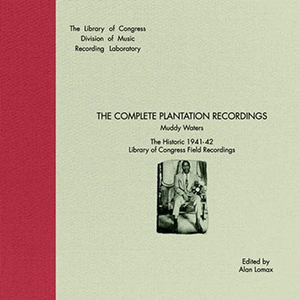
My dad turned me on to Muddy Waters when I was still a little kid, and it felt like I’d discovered nuclear power. I’d never heard such brutish authority expressed musically. Hard Again was one of the first CDs that Pops bought, and Pops was amongst the first in the pool when it came to compact laser disc technology. It’s a legitimately excellent record despite the fact that it was released in 1977 – far from Muddy’s heyday as the King of the Chicago Blues. And he was that. Certainly my favorite of the electric Chicago Blues artists. When I was starting college, The Complete Plantation Recordings was released, and it felt like an entirely new (old) thing. The recordings were made over the course of two front porch sessions in 1941 and 1942 for the Library of Congress, and I was fascinated to hear the fledgling titan discovering his voice. It’s been alleged that Muddy surprised himself too. When he heard the results, he realized that he could do it every bit as well as the next guy, and he carried that confidence north where he’d play a hand in revolutionizing the art.
I loved those early recordings, but I rarely listened to them. I’d throw the disc in the player on occasion, but it was mostly to show off my superior taste and knowledge. I knew the recordings were powerful, and I’d eventually buy a reissued vinyl copy of a ‘60s compilation containing most of the songs, but… I never listened to that either. Noise reduction techniques had sapped the life out of the performances. Analogue Productions has come along to remedy that. They’ve bestowed us with a two-record set of the complete recordings including solo numbers, Muddy playing with a quartet, and interviews between Muddy and Alan Lomax, the famed purveyor of folk field recordings from around the world.
Oh, baby. This is the stuff, y’all. The classy set is housed in a clothbound gatefold cover with extensive liners including technical information illuminating the processes required to bring these recordings back to life. And they are alive. Lomax originally recorded the tunes directly onto aluminum discs with a gargantuan machine that he was carrying around in the trunk of his car. There’s a picture of the damn thing in the liners, and it looks like some sort of World War II communication station. Which is fitting because Muddy was dropping bombs. The most compelling tunes involve only him or him and another guitarist. The quartet’s songs comprise the entirety of side two, and Muddy makes his bandmates seem like novices. They were called the Son Simms Four, but they were really the Muddy Waters One. Any fool could hear that.
This really feels like a landmark release. It’s the most fun I’ve had outside of a Music Matters Jazz title in some time. I wish it had been pressed at RTI, but it was pressed at AP’s own facility. I find their pressings to be inconsistent. This one’s good, but it ain’t perfect. And AP got so close to the bone when mastering these recordings that the defects stand out that much more clearly despite the fact that the recordings are imperfect to begin with. Still, if you love the Blues you need this in your collection. Now’s no time to hesitate. It will never get this good again.
(Note: these are field recordings. They sound like field recordings. This set stands atop all other reissues of field recordings that I’ve ever heard. Thus, the high rating for sonics. Please manage your expectations prior to purchasing. Then, purchase. Seriously.)
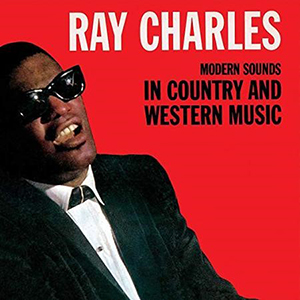
Before my dad turned me on to Muddy Waters, he got me into Ray Charles. Because Mr. Ray was always Pop’s favorite, I haven’t asked recently, but I’d be surprised if the Old Man could come up with anyone he prefers hearing to this day. Emmylou Harris, maybe. He has a crush on her, but I bet he’d take his Ray Charles discs to the proverbial desert island if he had to pick just one artist. His discs are of the compact variety at this point. I relieved him of his record collection’s highlights years ago. And it’s a good thing because many of his records were unplayable. I think he used them for dinnerware or something. I’ll ask about that when I ask about Emmylou. Anyhow, I’ve now officially replaced all of the Ray titles that I pilfered from him with mostly great reissues. The two volumes of Modern Sounds in Country and Western Music were the last to need replacing. And thanks to Concord Records, they have been.
Man, I’ve been alternately excited, scared, disappointed, and stoked again for at least five separate cycles since I learned that these records were in the reissue pipeline. Anyone who knows about these things would tell you that the Modern Sounds records shined a new light on Charles’s talent and Country music simultaneously. The sound is hell and gone from what he was doing during his time with Atlantic, and I generally prefer the Atlantic material as those records were typically more stripped down and dirtier than the ABC material. But I make exceptions for the Modern Sounds records. I love those. Or these.
This is to Country music what Thundercat’s Drunk set is to Jazz. The structure is there, but that’s about it. Brother Ray hangs a bunch of tasty piano work and Soul singing on that Country scaffolding. There are syrupy string sections and a honking horn department as well. As you might readily imagine, Ray’s voice is the star of the show. There’s a little less of his piano work than one might hope to hear, but you don’t really miss it except when you start comparing Modern Sounds to his Atlantic era. The epochs can be neatly divided: souled out and filthy Atlantic recordings from the ‘50s, and the safer-for-white-listeners ABC material with the heavy-handed production in the ‘60s. These will likely be the only albums I seek out from that time because I can’t do without hearing Ray play songs by (or made popular by) Buddy Holly, Hank Williams, Hank Snow, Don Gibson, et al. He was as original an interpreter of others’ material as his acolyte, Joe Cocker. By the time Ray’s done with “Bye Bye Love” and “Your Cheating Heart,” you can barely recognize them as covers of Country songs at all. Hallelujah, I love him so.
Here’s what scared me: It’s nearly impossible to uncover any info on the sources that Concord Records used or how they went about making these records at all. I found a site that credited Bob Fisher with the remastering, but my eyes say that Kevin Gray’s symbol is in the dead wax. That would be phenomenal news and would probably have been publicized, but who knows? Times are strange. I usually assume that no news is bad news as it relates to mastering and pressing concerns, but these albums sound pretty lively despite the near certainty that this is not an all-analog release. The pressings are good. The packaging is lazy. The music is timeless. These will do until an entity like MoFi or Analogue Productions or Pure Pleasure gets their claws in the masters. They’re good enough for now.
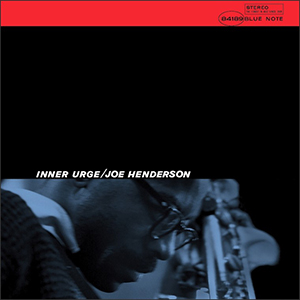
I caught a Meters tribute at the SF Jazz Center’s Joe Henderson Lab a few weeks back, and it sucked. The band didn’t play many Meters tunes, and they just weren’t ready for primetime. I kept wondering what kind of fun the Preservation Hall Jazz Band was having in the big room next door. I liked the Joe Henderson Lab, though. A little research reveals that Henderson lived the last few decades of his life in San Francisco, and he even taught private lessons in his home. Wish I’d been around for all that. I didn’t discover his music until a couple of years ago when Music Matters reissued his Page One record. Now, they’re offering his classic Inner Urge set, but only if you subscribe to receive the entire twelve title run from their new SRX series. If you have the cash for it, you should do that before you finish reading this review. These reviews are going to get a little redundant, I’m afraid. We’ll be exploring at least six more of the titles after having checked in on a couple last month. If you’re the type that flips forward to read the end of a book because you can’t take the suspense, you should stop doing that. It’s weird. But I can tell you that these are the finest sounding discs in my collection — no need to skip to the end to learn that basic truth. And Inner Urge, specifically, is masterful.
Henderson said that he wrote the music to “Inner Urge” as he was acclimating to the pace of living in New York City and the amount of effort it took to get by there. You can almost hear the city’s bustle in the busy intro before the camera pulls back briefly to reveal a wider, more introspective scene featuring Bob Cranshaw’s bass. The brooding can’t last long though. The listener is soon drawn back into the fray by Henderson’s sprawling improvisation. All of the emotions are in there, man. The awe, the frustrations, the beauty, the discord. Luckily, McCoy Tyner drops in to add some perspective with his piano, but Elvin Jones insures that the City never sleeps as he keeps driving the percussive pace with his cymbal. Then, he takes his turn in the spotlight, and you can damn near see the people rushing by you with their heads bent to the wind. There’s no time to take in the sights. You’re just holding on at this point and trying not to get swept away by the waves of activity and action. By the time we get back to Henderson’s introductory theme, it sounds way less hectic. We’ve adjusted to the challenging pace, and we at least have our legs under us for the time being.
And that’s just the title tune. Throughout the album, Henderson’s lines sort of flutter around like he’s got a hummingbird in the bell of his sax or something. He’s fast and precise — the musical representation of watching Vasily Lomachenko in the ring. The sound is undeniably melodic as Henderson jabs and peppers and bounces around the circle, then moves in for the knockout when he’s got us off balance. There’s a sweet science behind the chaos that’s a bit beyond my pay grade, but it’s a perfect storm of setting the scene then attacking when the time is right. And, of course, Music Matters presents the material in the most transparent way possible. The pressing is flawless with a nearly non-existent noise floor — just deep and deeper black. For Blue Note fans, this era must feel a lot like being a New York Yankees fan in the mid to late ‘90s. It may never get this good again.


